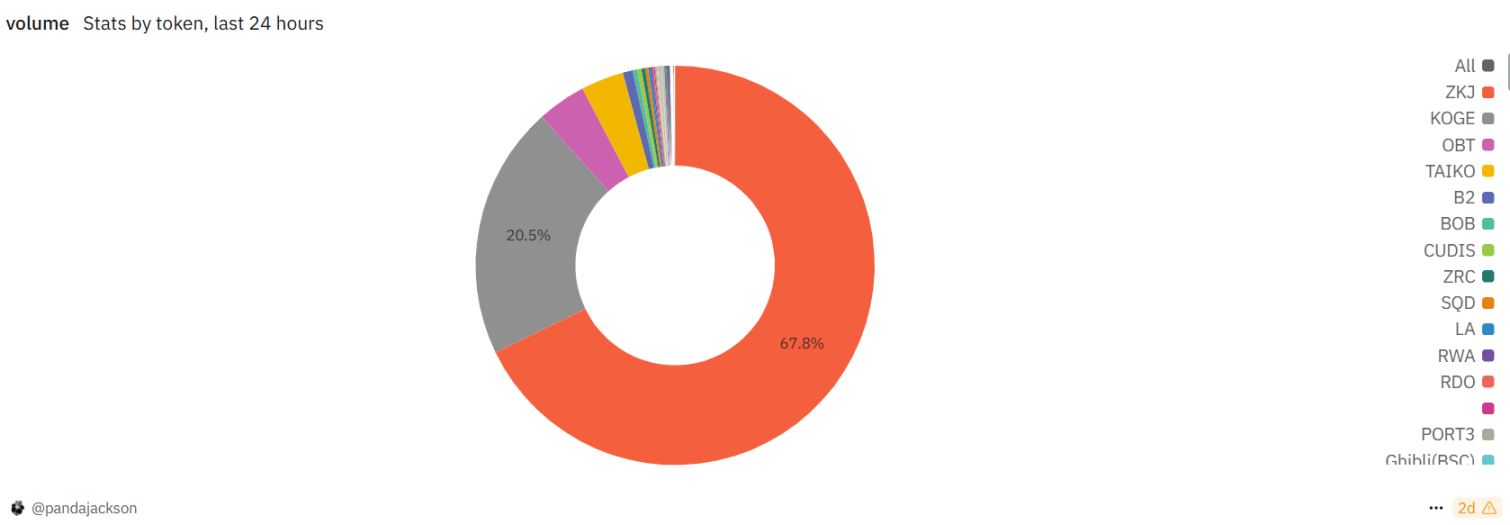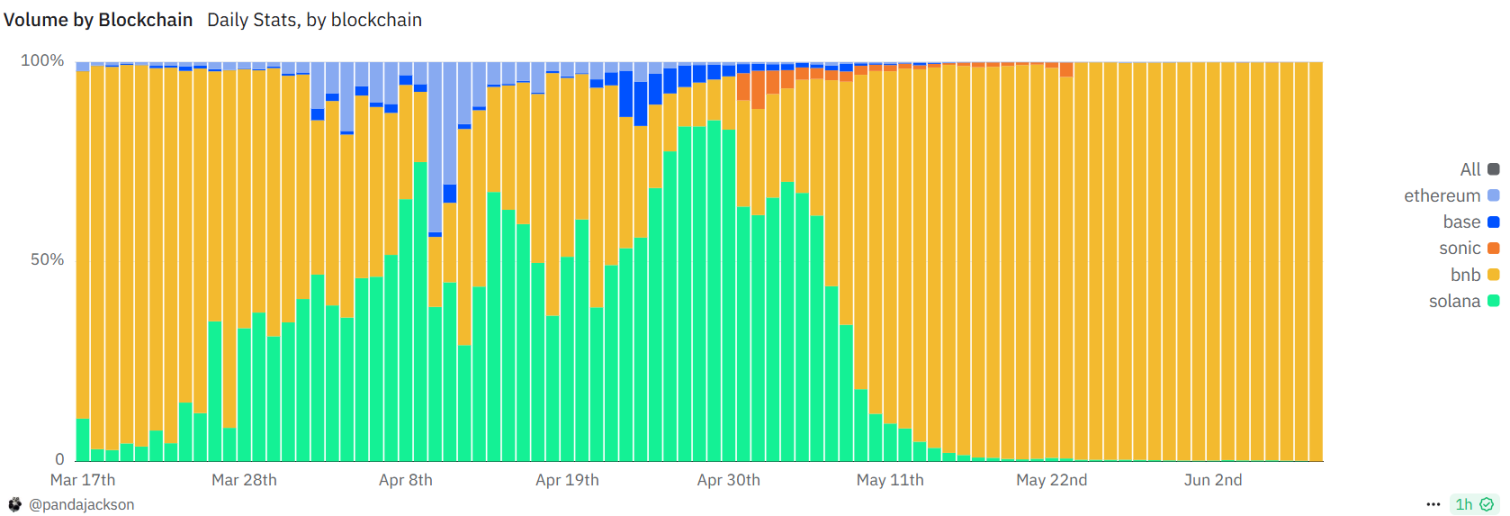Author: 1912212.eth, Foresight News
On June 8, Binance Alpha launched Open Loot (OL). The airdrop claim threshold requires at least 233 points, which is the highest point requirement since Binance Alpha adopted the points system. Since June of this year, the airdrop participation threshold on Binance Alpha has been continuously rising, from just over 200 points to 223, and now to 233 points. The increase is in scores and thresholds, while the market participants have become "numb" to it.
Since its launch in December 2024, Binance Alpha has attracted countless players with its low-threshold, high-return airdrops and TGEs, but the continuous rise in point thresholds raises the question: Is this points frenzy nearing its end? Will it continue to escalate?
High-Cost Game: Why It’s Getting Harder
The appeal of Binance Alpha lies in its potential returns. According to statistics from airdrops.io, in May 2025, the platform's five airdrops averaged a first-day value of $270 per user, with a total value reaching up to $656 at historical peaks. For example, the SIGN airdrop of 1,500 tokens was valued at approximately $177, and the BOOP and NXPC airdrops also brought considerable returns to users. Compared to the uncertainty of traditional on-chain airdrops, Binance Alpha's transparent rules and quick redemption mechanisms attract players.
However, high returns come with high costs. Points are primarily earned through asset holdings and token purchases. For instance, in the trading volume points system, purchasing $2 worth of Alpha tokens earns 1 point, and each doubling adds 1 point (e.g., $8 earns 3 points, $1,024 earns 10 points).
Now, let's assume a typical retail investor has a balance between $10,000 and $100,000, earning 3 points daily from their balance. According to the trading volume points rules, if an average player wants to earn 15 points, they would need to achieve a trading volume of around $32,000, and this is just the buying requirement (selling does not count towards points). If a new player starts from zero to build trading volume, they would need to maintain trading activity for at least 13 days to qualify for the Binance Alpha airdrop. This undoubtedly poses a significant challenge to the capital scale and patience of ordinary retail investors.

Additionally, Binance Alpha has added extra point consumption during the airdrop token process. Typically, each time an airdrop is claimed or a wallet TGE event is participated in, 15 points must be consumed. This means that if points just meet the threshold, claiming this airdrop will render the next airdrop irrelevant. This also tests players' judgment; if the current airdrop project has average quality, choosing to claim it may only yield a value of a few dozen dollars, while missing out on the "next" airdrop or TGE worth hundreds of dollars could result in significant time and opportunity costs.
The "wear and tear" costs during the trading process cannot be ignored either. Foresight News noted that when trading certain tokens, even if bought and quickly sold, it could result in losses of up to several dozen dollars. Therefore, players need to consider transaction volume, price fluctuations, and other factors comprehensively when choosing tokens; otherwise, they may face a situation where aggressive trading does not yield sufficient returns to cover costs after receiving the airdrop.
The MEV issue is also worth noting; if luck is not on one's side and MEV protection is not activated, significant losses may occur. According to AI monitoring, on June 8, a user trading KOGE/USDT was squeezed for $47,000, spending $47,000 USDT to buy only 0.009 KOGE, resulting in a per-token cost of $5.18 million.
However, as long as airdrop returns exceed wear and tear costs, arbitrageurs will continue to flock in.
The Studio's Carnival?
Binance Alpha officially launched on December 17, 2024, positioning itself as a discovery platform for early Web3 projects, aiming to provide users with early participation opportunities in high-potential tokens. Its core mechanism is the Alpha points system, which assesses users' asset holdings (Balance Points) and Alpha token purchase volumes (Volume Points) on the Binance exchange and wallet ecosystem to determine their eligibility for TGEs and airdrops. Points are updated daily based on asset snapshots and trading behavior over the past 15 days, with a validity period of 15 days.
Initially, the threshold for Alpha points was relatively low. For example, the SIGN airdrop in April 2025 required only a low number of points to participate. However, as the platform attracted more users, the point thresholds rose. In May 2025, the BOOP airdrop required 137 points, while the Privasea TGE required 198 points. By June, the Bondex (BDXN) airdrop required 213 points, and Open Loot raised the threshold to 233 points. Some community users pointed out that a threshold above 220 points has become the norm, and without effort, one might "go hungry."
According to Dune data panels, on June 8, Binance Alpha's trading volume reached $2.04 billion, setting a new historical high, far surpassing competitors like the Solana chain.

The root of this "involution" phenomenon lies in the imbalance between supply and demand. The limited opportunities for Binance Alpha's airdrops and TGEs are coupled with a surge in participants. It is estimated that around 10,000 people qualify for the Open Loot airdrop, with each person receiving 1,836 OL tokens. As arbitrageurs swarm in, the platform raises point thresholds to filter out truly active users while curbing bot point farming behavior. In June 2025, Binance announced an upgrade to its risk control system, stating that any use of bots—including but not limited to scripts, automation tools, or other non-manual methods—would be considered a violation.
From Thousands of Dollars to Hundreds: Is Binance Alpha at Its End?
In the early stages, due to the low number of participating users and the emergence of high-return projects, ordinary retail investors could earn over $1,000 after costs if they maximized their airdrop claims. However, as the number of users has increased and thresholds have risen, their monthly earnings have dropped from thousands of dollars to around $600. In mid-May, the return from a certain project’s airdrop fell as low as $25, far below user expectations, indicating that the Alpha points game is shifting from "low threshold, high return" to "high threshold, low return," diminishing its appeal to ordinary players.
The popularity of Binance Alpha has not only changed user behavior but also had a profound impact on the entire industry ecosystem. On one hand, Alpha's massive traffic has created a "spillover effect" for other public chains. Since May, the DEX trading volume on the Solana chain has increased from $2.2 billion to $4.59 billion, partly due to the hype around tokens like $MOODENG on the Alpha platform. The NAVX token in the Sui ecosystem also saw a surge in trading volume after its listing on Alpha, and Alpha's points activities have injected vitality into emerging public chains to some extent.
On the other hand, Alpha's success has prompted other exchanges to follow suit. Twitter KOL @_FORAB revealed that exchanges like Kraken and Bithumb have recognized Alpha's model and may launch similar activities. As competition intensifies, airdrop thresholds and costs will further increase, and users may face higher barriers to participation. Binance itself is continuously adjusting its strategy, such as launching double points activities (where purchasing Alpha tokens through the BSC chain or limit orders earns double points) to stimulate trading volume. However, these incentive measures further raise point thresholds, exacerbating the "involution."
In the face of high point thresholds and increasingly fierce competition, is Binance Alpha nearing its end? The answer may not be a simple yes or no. User fatigue is evident, and high thresholds and costs are deterring newcomers. If returns continue to decline, ordinary users may choose to exit. Bots and arbitrageurs are crowding the space: despite Binance upgrading its risk control system, the issue of bot point farming has not been completely resolved. This not only undermines fairness but also increases the platform's operational costs. Additionally, market saturation is a negative factor; the supply of quality projects in the Alpha ecosystem may be nearing exhaustion. In the long run, the platform may struggle to maintain high-frequency, high-value airdrop activities.
免责声明:本文章仅代表作者个人观点,不代表本平台的立场和观点。本文章仅供信息分享,不构成对任何人的任何投资建议。用户与作者之间的任何争议,与本平台无关。如网页中刊载的文章或图片涉及侵权,请提供相关的权利证明和身份证明发送邮件到support@aicoin.com,本平台相关工作人员将会进行核查。




